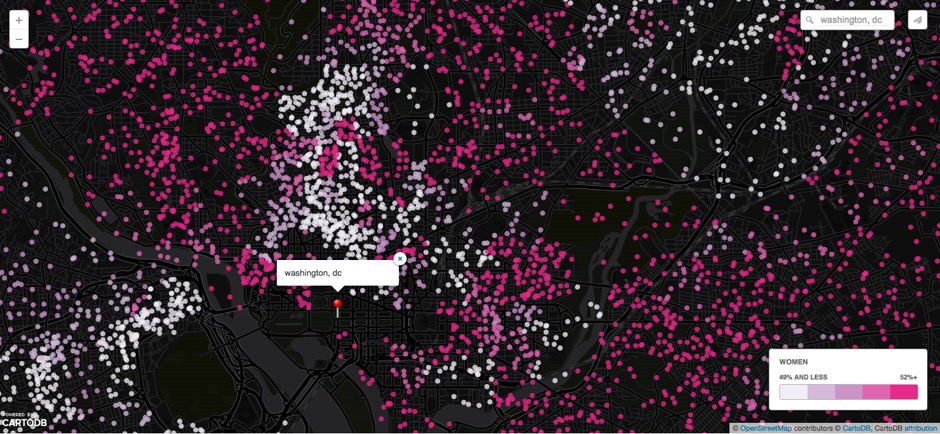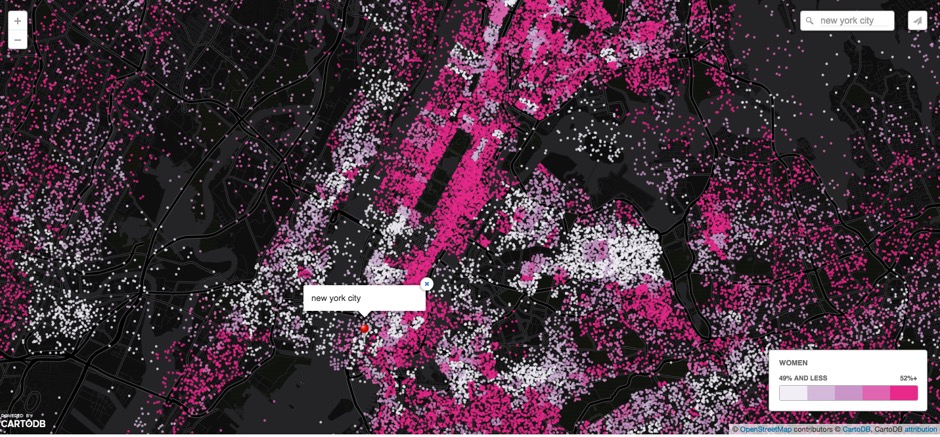Women—especially, young single ones—love cities. But they make up a bigger part of the population in some places than others.
Dot maps are pretty, and pretty useful. In the past, they’ve shown us how different racial groups are spread out across the U.S., where immigrants live, and which places have the most jobs. Now a new dot map visualizes where all the American ladies live, and how their numbers compare to the rest of the population.
CartoDB’s Andrew Hill created this map using 2014 census data. Each dot in his map represents 1,000 women, and is shaded based on the ratio of women to the total population in that census tract. So the white dots are where women make up less than 49 percent of the total population, and the pinkest ones exist where they make up more than 52 percent:
There are also several dark patches across this map, many located in heavily populated cities. That’s because census boundaries on which the map is based include areas with harsh terrain, water bodies, large infrastructure, and monuments. The mapping method just doesn’t pick up the small numbers of women in some of these areas.
From our partners:
“So if there are very few women in the boundary, it will look pretty empty over an entire polygon,” explains Hill via email. If you look around the White House, for instance, he says what’s probably happening is that the relative lack of residences in the area means less than 1,000 women are being measured.
Here’s a map of Washington, D.C., showing the darkened regions around the National Mall and the White House:
And here’s the dot map for New York City:
Looking at the U.S. map as a whole, two trends stick out. One is that cities have more and denser clusters of pink dots, which makes sense because cities contain more and denser clusters of people overall.
But this pattern can also be explained, in part, by the special relationship women—especially younger, unmarried ones—have with cities. Urban life has long been an alternative to suburban domesticity for American women, Rebecca Traister writes in her new book, All the Single Ladies: Unmarried Women and the Rise of an Independent Nation. Cities offer jobs, social networks outside of marriage, and amenities in close proximity that make it easy for women to outsource chores they’ve been traditionally asked to do.
”Cities have long provided safer harbor for, and have in turn been shaped by, single women,” Traister writes.
Second, the dot map shows that cities on the East Coast, like New York and D.C., generally have more and denser clusters of pink dots than the ones on the West Coast, like Seattle (below, top) or San Francisco (bottom). There are probably several reasons for this geographical imbalance, but it lines up nicely with a trend that shows how ratios of single men to single women are higher in Western cities than Eastern ones.
Check out where the female population in your city is concentrated here.
This feature originally appeared in Citylab.




















